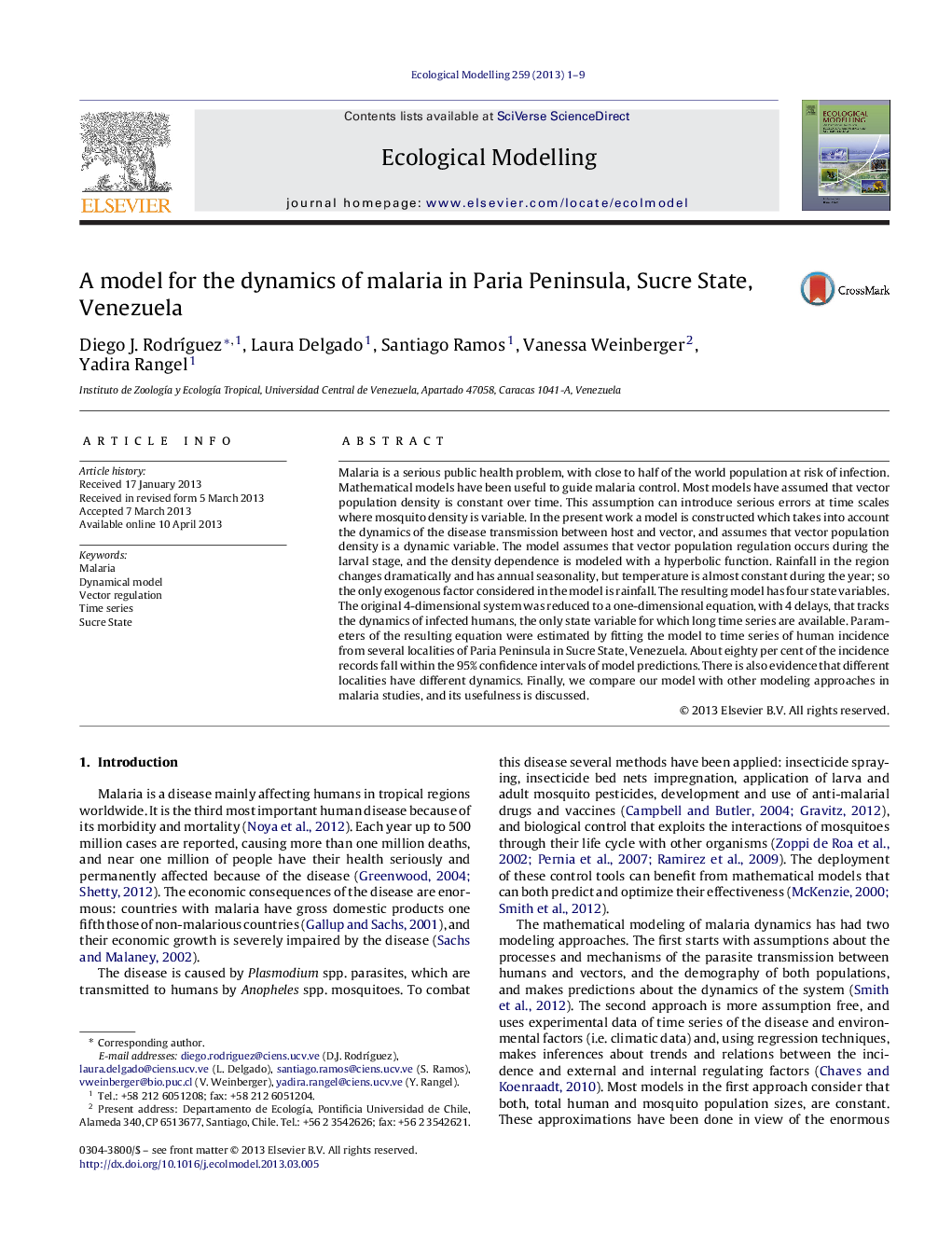| Article ID | Journal | Published Year | Pages | File Type |
|---|---|---|---|---|
| 6297217 | Ecological Modelling | 2013 | 9 Pages |
Abstract
Malaria is a serious public health problem, with close to half of the world population at risk of infection. Mathematical models have been useful to guide malaria control. Most models have assumed that vector population density is constant over time. This assumption can introduce serious errors at time scales where mosquito density is variable. In the present work a model is constructed which takes into account the dynamics of the disease transmission between host and vector, and assumes that vector population density is a dynamic variable. The model assumes that vector population regulation occurs during the larval stage, and the density dependence is modeled with a hyperbolic function. Rainfall in the region changes dramatically and has annual seasonality, but temperature is almost constant during the year; so the only exogenous factor considered in the model is rainfall. The resulting model has four state variables. The original 4-dimensional system was reduced to a one-dimensional equation, with 4 delays, that tracks the dynamics of infected humans, the only state variable for which long time series are available. Parameters of the resulting equation were estimated by fitting the model to time series of human incidence from several localities of Paria Peninsula in Sucre State, Venezuela. About eighty per cent of the incidence records fall within the 95% confidence intervals of model predictions. There is also evidence that different localities have different dynamics. Finally, we compare our model with other modeling approaches in malaria studies, and its usefulness is discussed.
Keywords
Related Topics
Life Sciences
Agricultural and Biological Sciences
Ecology, Evolution, Behavior and Systematics
Authors
Diego J. RodrÃguez, Laura Delgado, Santiago Ramos, Vanessa Weinberger, Yadira Rangel,
